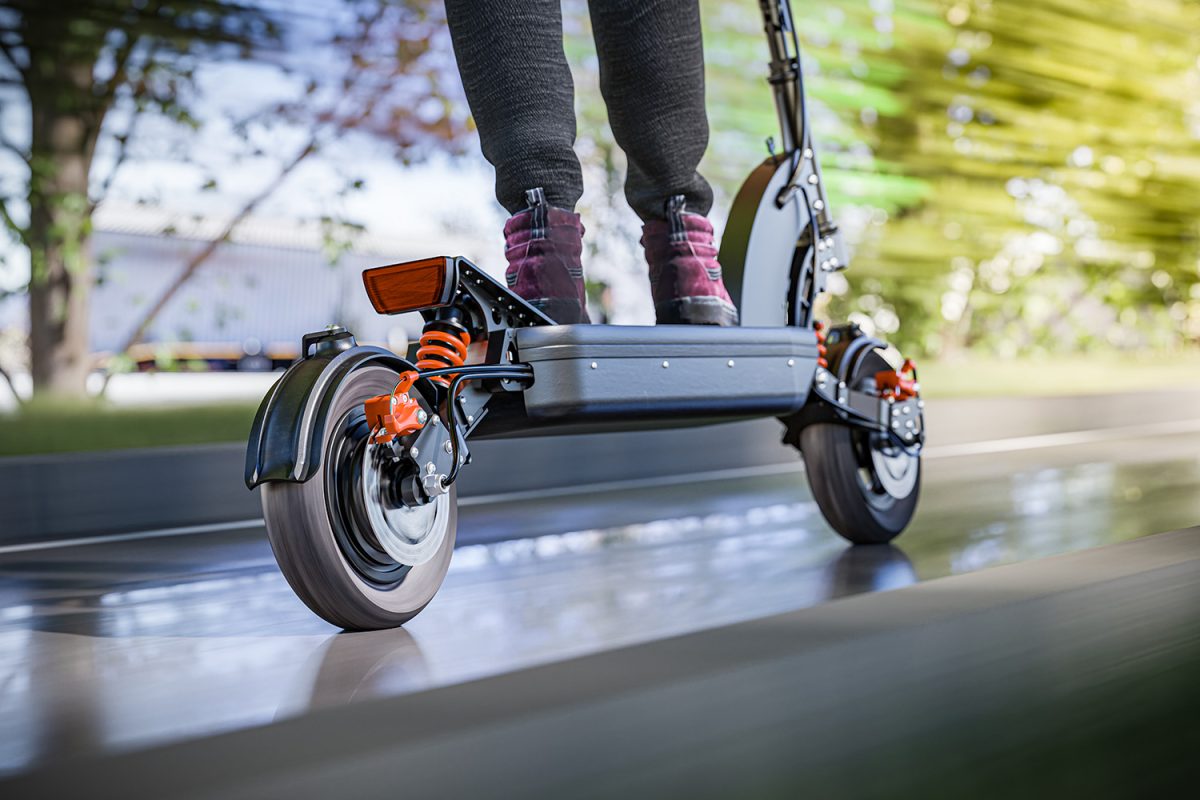Electric bikes and scooters might be all the rage for commuters, but their dramatic rise to popularity on college campuses is accompanied by significant safety concerns.
E-travel has burst onto the transportation scene as a convenient, relatively cheap, green, and incredibly fun way to commute that even avoids the sweat and cumber of leg-powered bicycles.
E-bikes and scooters are clearly better than gas-powered vehicles from in-town carbon emissions, operating cost, and traffic perspectives and are overwhelmingly faster than walking. I see these cool machines every day all over Iowa City.
This observation is well-validated. The U.S. E-bike market was estimated at over $943 million in 2023 and is expected to grow by over 10 percent annually over the next eight years.
From an accessibility perspective, this trend is fantastic. Getting more people on bikes and empowering them to use the car less is a broad win in my book.
However, the popularity explosion of E-travel presents a new and unique public health issue. These non-human-powered commuting methods are largely unregulated, do not require a license to operate, and are not explicitly subject to traffic laws: anyone of any age can purchase and ride one at will.
As an avid recreational and commuter bicyclist myself who is ingrained in the Iowa City bike culture and community, I can confidently affirm that most traditional bicyclists do not have a desire to ride E-bikes or scooters. People who decide to use E-travel are generally not experienced traditional bicyclists.
This is important for two reasons.
First, operating a bicycle at 25 or more miles per hour is an endeavor that carries significant potential for harm, especially head injuries. Bicycling safely requires skill and experience. I’ve been riding almost as long as I’ve been walking, I’m very comfortable generating and controlling my own speed, and even I still crash sometimes.
Granted, many of these accidents happen on dirt trails or gravel roads, but the simple truth is that putting an inexperienced rider on an exposed machine that moves faster than they would otherwise go is a recipe for harm, regardless of terrain. Many new E-bike and E-scooter riders lack the experience required to safely operate them at high speeds.
Second, there is a well-established culture and community associated with bicycling, that E-bike and scooter users likely lack. Many of my closest friends are cyclists, and I’ve met many of my close friends through cycling events. They’re quite literally my ride-or-dies. Everyone wants everyone else to be as safe as possible, so we peer pressure each other into wearing helmets and share stories about accidents. Anecdotes about people breaking their headgear instead of their heads are incredibly common and underscore the absolute necessity of helmet-wearing while riding.
I suspect that the lack of a cohesive E-traveler community, owing to the newness of the transportation method and the very diverse user population, contributes to lagging helmet use.
Anecdotally, about half of the E-travelers in Iowa City I see are helmeted, far less than leg-powered bicyclists.
The U.S. Consumer Product Safety Commission agrees, estimating that from 2017-22, there were 360,800 emergency department visits and 233 deaths related to micromobility devices, which include E-bikes, E-scooters, and hoverboards.
This problem should be approached from multiple fronts. Data collection should be continued on who uses E-transport, how many and what type of injuries are occurring, and how prevalent helmet use is. Cities and companies should educate their constituents about optimal safety practices and organize training for inexperienced users.
Most importantly, E-travelers should ride together, gain experience, and pressure each other into being safe.
Promoting accessible non-car commuting through E-bike and E-scooter use is a very worthwhile endeavor, but safety must become a priority.



